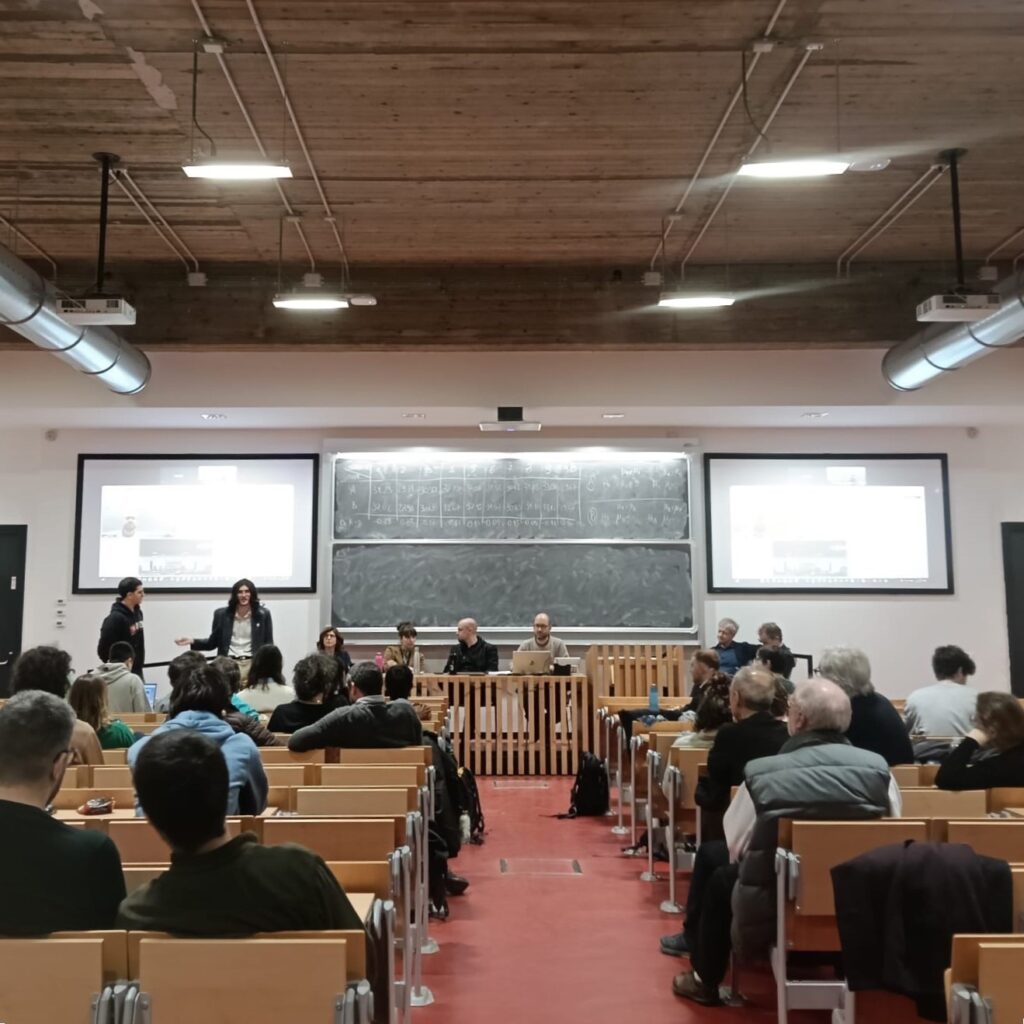On March 25th, a public event held in one of the central lecture halls of Politecnico di Milano, explored a timely and complex question: what is the relationship between the rapid development of artificial intelligence, its growing energy demands, and the unfolding climate crisis? (n.d.a. – It felt particularly meaningful to speak in that same classroom where, back in 2010, I attended my very first Open Day as a prospective student.) The event was organized by Resilient Global Action Project (G.A.P.) Polimi — a student collective engaged in socio-environmental justice — in collaboration with N.I.N.A (Neither Intelligent Neither Artificial), a civil society organization working on the cultural and political impacts of AI across sectors like labor, health, environment, data, and education. As part of the program, the Department of Design of Politecnico di Milano was invited to represent the NEUROCLIMA Horizon Europe Project.

The discussion opened with Gianluca Ruggieri, Environmental Engineer from the University of Insubria, who pointed to the environmental footprint of AI infrastructures and algorithmic training. These systems often rely on massive computing power and vast datasets, consuming electricity, water and soil, and raising concerns about their long-term sustainability. (S&P Global Market Intelligence)
Roberto Verdecchia, Software Engineering from the University of Florence brought attention to the concept of Green AI, and its dual potential: reducing the environmental impact of AI itself, and using AI to reduce human environmental impact more broadly. As defined in his research, “Green AI regards practices aimed at utilizing AI to mitigate the impact that humans have on the natural environment in terms of natural resources utilized, and/or mitigating the impact that AI itself can have on the natural environment.” (Verdecchia et al., 2023)
Examples include optimizing energy grids, improving disaster response logistics, and designing more efficient resource management systems — all areas where AI can enable more sustainable pathways.
Hence, as climate scientist Silvio Gualdi from the Euro-Mediterranean Center on Climate Change (CMCC) emphasized, AI is not only part of the problem — it can also be part of the solution. Gualdi highlighted how AI-driven models are crucial in understanding and anticipating climate dynamics, including the formation and trajectory of extreme weather events such as typhoons, floods, and heatwaves. These models improve early warning systems, providing actionable information that can save lives and allow cities and governments to better prepare for emergencies.
For NEUROCLIMA, this complexity is a starting point. We believe that tackling the climate crisis through AI requires more than technical solutions: it calls for a collective, critical perspective that brings together technological skills, social sensitivity, and political dynamics. Green AI, for example, reminds us that thoughtful design choices can significantly reduce environmental impact — a valuable insight for those of us working to build civic technologies that are open, inclusive, and rooted in justice.
The NEUROCLIMA Solution has been received with enthusiasm and curiosity, largely due to its ability to bring together a wide range of stakeholders in discussions around climate change adaptation. By integrating both digital and analogue tools, the platform fosters inclusive participation and encourages meaningful engagement. A key strength of NEUROCLIMA lies in its emphasis on deliberative practices, which have prompted important public reflections on the role of technology in facilitating dialogue and shared decision-making.

The conversations that emerged during recent events have reinforced NEUROCLIMA’ role as a collaborative space—one that brings together researchers, civil society, and institutions to reflect, deliberate, and take action. Rather than simply transmitting information about climate change, NEUROCLIMA is designed to co-create the conditions for deeper understanding and collective response. At its core, the initiative leverages digital tools not to replace human judgment, but to enhance it in ways that are equitable, sustainable, and rooted in collaboration.
Sources
N.i.n.a. Né intelligente né artificiale. (n.d.). N.i.n.a. Né intelligente né artificiale. Retrieved April 8, 2025, from https://www.nina.watch/. Audio Recording of the event.
S&P Global Market Intelligence. (2025, March 5). Datacenters balancing sustainability goals with accelerating AI demand. https://www.spglobal.com/market-intelligence/en/news-insights/research/datacenters-balancing-sustainability-goals-with-accelerating-ai-demand
Verdecchia, R., Sallou, J., & Cruz, L. (2023). A systematic review of Green AI. WIREs Data Mining and Knowledge Discovery, 13(4), e1507. https://doi.org/10.1002/widm.1507


